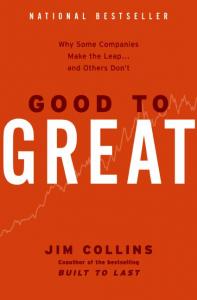
I have been to a dozen refineries over the last 3 years and each one I have been to (I think this applies to any workplace) has had a different culture. There are certain things that bind them.
We all have more in common than we don't, some would say engineers and contractors maybe a little more so. Everywhere you go--around the US, China, Japan, Middle East, or Europe--much is the same, but at the same time there are differences.
- They may come from local cultural influences, or company influences, or just plain old human nature.
- Everywhere there are different schedule, product, safety, or management priorities.
- Some companies have horizontal organizational charts, some have vertical.
- Some companies loathe paperwork; some companies wield it as a valuable tool.
This culture plus how things were done yesterday build an inertia that determines the trajectory of the company into the future.
Job Site Experience
For example, I recently witnessed some events on a job site that started this line of thought. Without going into the details, a contractor took some shortcuts that (I hope) the general engineering community would agree were not correct. Skipping a few quite easy precautions, there was a significant increase in the risk to environment and the
health and safety of all those nearby. This was brought to the plant engineers we were working with and they said the appropriate things about how there are procedures in place designed to prevent this from happening and it will be rectified.
But this was not the first, or last, such incident on this site and I asked more about the procedures and who is responsible for them. I was eventually told, in that 'off-the-record' sort

of way that makes you a co-conspirator, that doing things the proper way requires more paperwork than letting contractors do as they see fit.
And then came the ever popular, 'This is the way it is done everywhere'. I think everyone sees this to some degree in their workplace, but what is the most effective way to counter this inertia and create positive change?
The classic story is of the fresh graduate out of school with a newly minted degree and a backpack of great ideas that are going to change the world. Then is gradually ground down by the inertia of the system until they find themselves telling some young idealist 'this is just the way it is done'.
But when moving large masses, large sudden movements are rarely possible--or constructive.
Repeated small pushes in the right direction are more effective over the long run. In great companies improvements are exponential; each improvement is captured and then improved upon--like compounding interest.
In the business world '
Good to Great' by
Jim Collins is often cited as how to build a great company. While his message is slanted a little more towards people in management positions and profits, he shares some great ideas and they can be applied to any level or any organization.
Good to Great Ideas

Bring the right people on board, have a simple but comprehensive concept, and act in a disciplined manner towards the goal. This last concept might be the most challenging.
The big changes are driven by small, continuous pushes in the direction of the goal and may require a long period of attention. But as the changes start accumulating it will get easier.
This also means that while doing new things, there might detrimental things that you need to stop doing--sometimes harder to do.
I also see parallels in groups trying to raise
environmental awareness. These are groups that must work against massive institutional inertia.
Not only are they working against the fear of change, but also the stereotype that their ideas do not have business benefit. One such group in
Chicago is
Foresight Design Initiative. With the concept that smart design improves sustainability and quality of life in
urban areas, from their founding they have driven this through community building.
They have actually built from both sides--building a grassroots community through monthly meet and learn sessions and engaging business, industry, and government leaders to develop broader strategies. They then use the gathered information and inertia to further refine the programs moving forward. This has been highly effective and they have a long list of accomplishments in the city.
Innovation and improvements are mandatory for companies to survive, let alone thrive, and there are hundreds of theories and
articles out there. Keeping to simple concepts and involving the right people are keys to all of them.
 I have been to a dozen refineries over the last 3 years and each one I have been to (I think this applies to any workplace) has had a different culture. There are certain things that bind them.
We all have more in common than we don't, some would say engineers and contractors maybe a little more so. Everywhere you go--around the US, China, Japan, Middle East, or Europe--much is the same, but at the same time there are differences.
I have been to a dozen refineries over the last 3 years and each one I have been to (I think this applies to any workplace) has had a different culture. There are certain things that bind them.
We all have more in common than we don't, some would say engineers and contractors maybe a little more so. Everywhere you go--around the US, China, Japan, Middle East, or Europe--much is the same, but at the same time there are differences.
 of way that makes you a co-conspirator, that doing things the proper way requires more paperwork than letting contractors do as they see fit.
And then came the ever popular, 'This is the way it is done everywhere'. I think everyone sees this to some degree in their workplace, but what is the most effective way to counter this inertia and create positive change?
The classic story is of the fresh graduate out of school with a newly minted degree and a backpack of great ideas that are going to change the world. Then is gradually ground down by the inertia of the system until they find themselves telling some young idealist 'this is just the way it is done'.
But when moving large masses, large sudden movements are rarely possible--or constructive. Repeated small pushes in the right direction are more effective over the long run. In great companies improvements are exponential; each improvement is captured and then improved upon--like compounding interest.
In the business world 'Good to Great' by Jim Collins is often cited as how to build a great company. While his message is slanted a little more towards people in management positions and profits, he shares some great ideas and they can be applied to any level or any organization.
of way that makes you a co-conspirator, that doing things the proper way requires more paperwork than letting contractors do as they see fit.
And then came the ever popular, 'This is the way it is done everywhere'. I think everyone sees this to some degree in their workplace, but what is the most effective way to counter this inertia and create positive change?
The classic story is of the fresh graduate out of school with a newly minted degree and a backpack of great ideas that are going to change the world. Then is gradually ground down by the inertia of the system until they find themselves telling some young idealist 'this is just the way it is done'.
But when moving large masses, large sudden movements are rarely possible--or constructive. Repeated small pushes in the right direction are more effective over the long run. In great companies improvements are exponential; each improvement is captured and then improved upon--like compounding interest.
In the business world 'Good to Great' by Jim Collins is often cited as how to build a great company. While his message is slanted a little more towards people in management positions and profits, he shares some great ideas and they can be applied to any level or any organization.
 Bring the right people on board, have a simple but comprehensive concept, and act in a disciplined manner towards the goal. This last concept might be the most challenging.
The big changes are driven by small, continuous pushes in the direction of the goal and may require a long period of attention. But as the changes start accumulating it will get easier. This also means that while doing new things, there might detrimental things that you need to stop doing--sometimes harder to do.
I also see parallels in groups trying to raise environmental awareness. These are groups that must work against massive institutional inertia.
Not only are they working against the fear of change, but also the stereotype that their ideas do not have business benefit. One such group in Chicago is Foresight Design Initiative. With the concept that smart design improves sustainability and quality of life in urban areas, from their founding they have driven this through community building.
They have actually built from both sides--building a grassroots community through monthly meet and learn sessions and engaging business, industry, and government leaders to develop broader strategies. They then use the gathered information and inertia to further refine the programs moving forward. This has been highly effective and they have a long list of accomplishments in the city.
Innovation and improvements are mandatory for companies to survive, let alone thrive, and there are hundreds of theories and articles out there. Keeping to simple concepts and involving the right people are keys to all of them.
Bring the right people on board, have a simple but comprehensive concept, and act in a disciplined manner towards the goal. This last concept might be the most challenging.
The big changes are driven by small, continuous pushes in the direction of the goal and may require a long period of attention. But as the changes start accumulating it will get easier. This also means that while doing new things, there might detrimental things that you need to stop doing--sometimes harder to do.
I also see parallels in groups trying to raise environmental awareness. These are groups that must work against massive institutional inertia.
Not only are they working against the fear of change, but also the stereotype that their ideas do not have business benefit. One such group in Chicago is Foresight Design Initiative. With the concept that smart design improves sustainability and quality of life in urban areas, from their founding they have driven this through community building.
They have actually built from both sides--building a grassroots community through monthly meet and learn sessions and engaging business, industry, and government leaders to develop broader strategies. They then use the gathered information and inertia to further refine the programs moving forward. This has been highly effective and they have a long list of accomplishments in the city.
Innovation and improvements are mandatory for companies to survive, let alone thrive, and there are hundreds of theories and articles out there. Keeping to simple concepts and involving the right people are keys to all of them.





